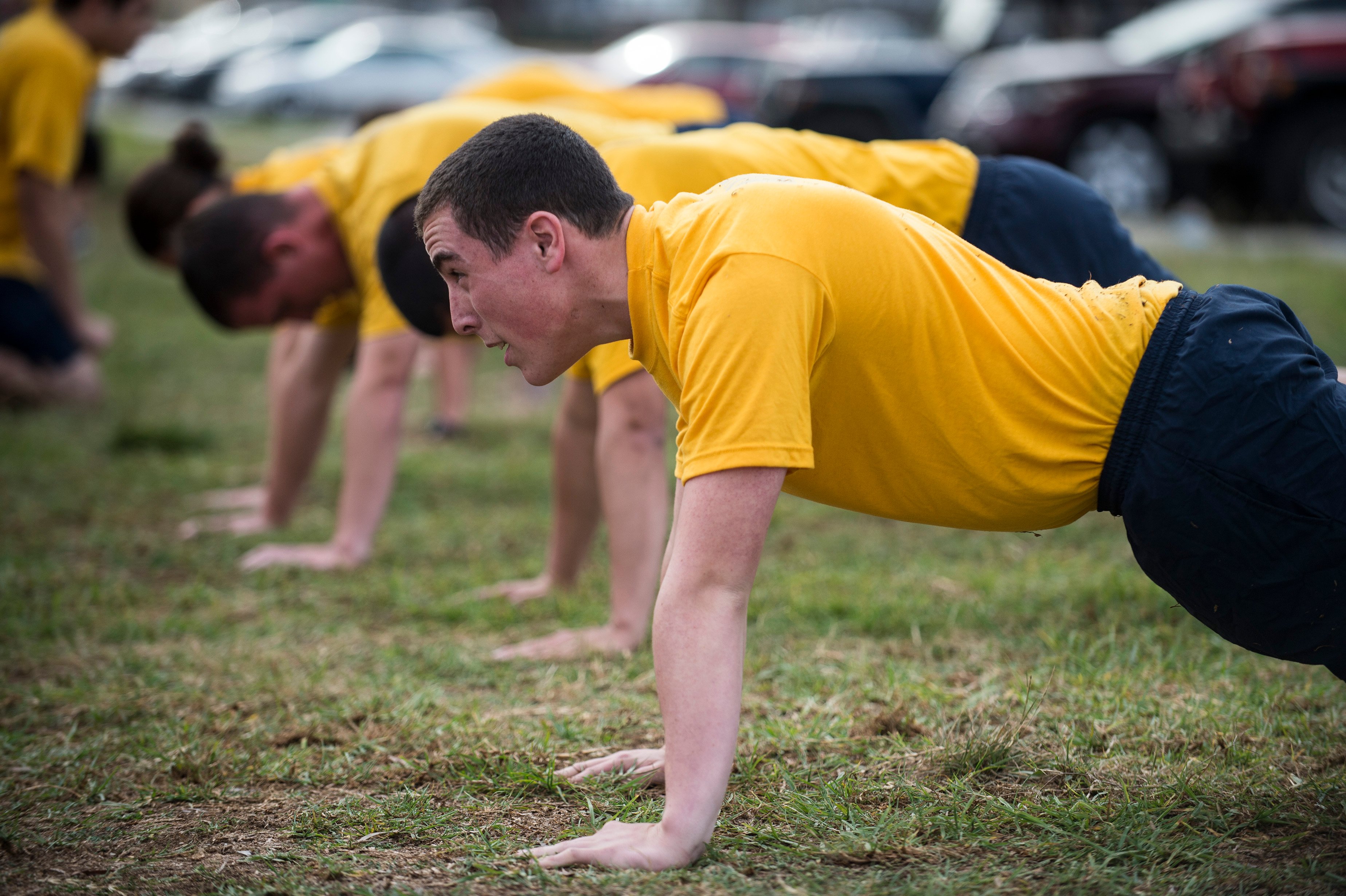
The Navy is rolling out new physical fitness standards and evaluation practices today, meant to promote a year-round culture of healthy living.
The bulk of the measures will go into effect on Jan. 1 and will shift the focus of the Physical Fitness Assessment to mission-readiness while still encouraging sailors to keep their height-weight ratio at an acceptable level.
Most notably, Navy Secretary Ray Mabus’ Aug. 3 memo sets up a warning zone for sailors that fall in between the Navy’s previous body fat percentage requirements and the Defense Department’s more forgiving percentages: the Navy figure will remain the goal, the DoD number will be the red line for failing the fitness assessment, and the gray area in between will serve “as a way of flagging folks, of identifying, hey, you’re starting to get towards that point where you’re unhealthy, and we want to make sure we get you some help,” Navy spokesman Cmdr. Chris Servello told USNI News.
Under the new system, sailors would go through the Physical Activity Risk Factor Questionnaire leading up to the assessment like they do now. They would then be measured for the Body Composition Assessment (BCA), where – rather than having to pass a height/weight screening like they do now – the sailor would have to pass at least one of three options: height/weight screening, single-site abdominal circumference measurement, or the body circumference measurement. Servello said this better accounts for all the body types in the Navy that are still healthy enough to handle the rigors of their job.
“As opposed to a system that was punitive in nature — you pass or you fail and you have so many failures and then we process you out — this program is designed to talk about and incentivize better health for sailors,” said Chief of Naval Personnel Vice Adm. Bill Moran in an overview of the new program provided to USNI News.
Unlike today, all medically cleared sailors would participate in the Physical Readiness Test (PRT) regardless of passing or failing the BCA. Passing the PRT would automatically result in passing the overall fitness assessment. Those who passed the test but failed the BCA would be enrolled in a Fitness Enhancement Program to help them get healthier, with access to dieticians and fitness support.
Servello said that allowing all sailors to take the Physical Readiness Test regardless of weight returns the focus to mission-readiness. A sailor may have a higher body fat percentage than the Navy would like, but if he or she can complete the physical requirements for being in the Navy then he or she shouldn’t be at risk of being separated.
“The goal is to help make the fleet healthier, more fit and to prevent us from unnecessarily losing sailors through a punitive system,” he said
Prior to releasing the new guidance, the Navy requested feedback from the fleet on the service’s fitness standards. Servello said the responses tended to fall into two camps. Some wrote to say, “I really struggle to meet the height and weight and the tape test, but I’m in good shape. I do very well in the PRT, but leading up to the PRT I’ve got to starve myself, I’ve got to essentially dehydrate myself so my measurements work out. How is that healthy? But when I take the physical part of it I do very well.”
Others were concerned with the idea of changing the requirements, noting “we don’t want to cheapen the standards because what we do in the Navy, it’s important that you’re in good shape and that you’re mission-ready.”
The memo notes the goal of the changes is to “strike a better balance between health and physical readiness.”
“The current PFA model enforces maximum body fat percentages and minimum physical readiness scores, but falls short on evaluating a Sailor’s overall health, and does not adequately reflect the challenges unique to sea duty and the increasingly technical nature of our jobs.”
Between now and Jan. 1, those being processed out of the Navy for fitness reasons will have one more chance to pass under the new rules. If that sailor can pass before Dec. 31, he or she can stay in the Navy.
Commanding officers will also be encouraged to start spot checks on both the body composition assessment and the physical readiness test – failures in these unofficial tests would not count against sailors but would force them to enroll in the Fitness Enhancement Program to avoid future failures during official assessments.





